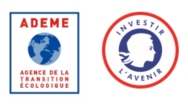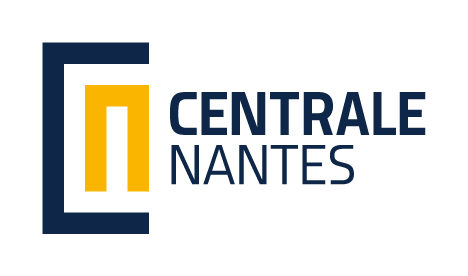HyMot project to decarbonise light commercial vehicles
 The HyMot project focuses on an innovative technology: the hydrogen engine. By exploring the possibilities to convert an internal combustion engine to hydrogen, this project will demonstrate the feasibility of an alternative powertrain for light vehicles. The project is part of France's strategy to develop the green hydrogen sector.
The HyMot project focuses on an innovative technology: the hydrogen engine. By exploring the possibilities to convert an internal combustion engine to hydrogen, this project will demonstrate the feasibility of an alternative powertrain for light vehicles. The project is part of France's strategy to develop the green hydrogen sector.
Decarbonisation of light commercial vehicles
The HyMot project aims to study an innovative technology, the hydrogen engine, applied to light commercial vehicles (LCVs) via the conversion of an internal combustion engine to hydrogen. It should lead to the creation of a demonstrator vehicle, a Master, and simulation of a digital driving fleet.The aim of the project is to show that a sustainable solution is possible for light commercial vehicles with specific needs, i.e. those that travel long distances every day and carry heavy payloads. With 31% of French greenhouse gas (GHG) emissions, transport is the activity that contributes most to France's GHG emissions. Working towards decarbonisation is therefore a major challenge and recent innovations in hydrogen could make this technology a sustainable solution to decarbonise mobility, alongside battery electric vehicles or vehicles equipped with a fuel cell, for example. The research carried out by the HyMot consortium could also support the development of a low-carbon hydrogen distribution infrastructure for mobility.
The key benefits of this solution
- reduced recharging time
- increased range
- greater power output
As this technology also aims to virtually eliminate pollutant emissions, it should also enable light commercial vehicles to operate in future low-emission zones (LEZs) being introduced in major cities.
This project is an important step on the road to developing a French hydrogen industry of excellence, and opens up concrete economic prospects in France: securing industrial sites and developing hydrogen skills throughout the value chain.
A consortium of public and private partners
HyMot brings together a consortium of eight major players from the public and private sectors, including Centrale Nantes:- Alpine Racing
- Bosch France
- Centrale Nantes,
- Faurecia Système d’Échappement
- IFP Énergies Nouvelles
- OSE Engineering
- Renault
- TotalEnergies

Centrale Nantes' role in HyMot
Centrale Nantes worked on the technical design for the hydrogen engine. Using a digital model of the demonstrator, which will become its digital twin, allowing for the simulation of different modes, the school was able to make recommendations for the engine's architecture. With this element established, Centrale Nantes will turn to exploratory research and improve performance in terms of autonomy, reduction of polluting emissions, consumption, driveability, etc. The school will rely on the use of its test benches and train experts via theses to advance knowledge in this field.First series of tests in 2023
Meeting alongside the head of the consortium, Bosch France, on 29 September, representatives of the seven other partners presented the project's progress to ADEME. The participants reviewed the project's main indicators and shared the technical design of the hydrogen engine, which was finalized before the summer: a first key step that officially establishes the project's status.In October 2023, a new decisive stage in the Hymot project was reached with the first engine on the test bench. Having designed the engine, defined its technical specifications and carried out numerous simulations to validate the consortium's choices, Renault's teams delivered the first Hymot engine to Bosch. The engine was put into operation at the Bosch Saint-Ouen site, in the presence of the Renault and Bosch teams. The results of the bench tests will be announced at the end of the first quarter of 2024.
Design of an on-road demonstrator vehicle
The consortium is working on the design of an on-road demonstrator vehicle, a Renault Master, scheduled for delivery in the first quarter of 2024. This vehicle will be used to analyse the performance of this technology on a track and to simulate a digital driving fleet. Initially, the vehicle will go through a preparation stage involving tuning and pre-calibration. The project team will then begin driving the demonstrator on the track, with results due to be unveiled in the second half of 2024.HyMot Funding

HyMot was one of the projects selected in the CORAM 2021 call for projects. Spearheaded by France Relance and BPI France and with backing from the Investments for the Future Programme (PIA) run by ADEME, CORAM aims to support R&D projects that accelerate the market launch of innovative and sustainable mobility technologies, services and solutions.
